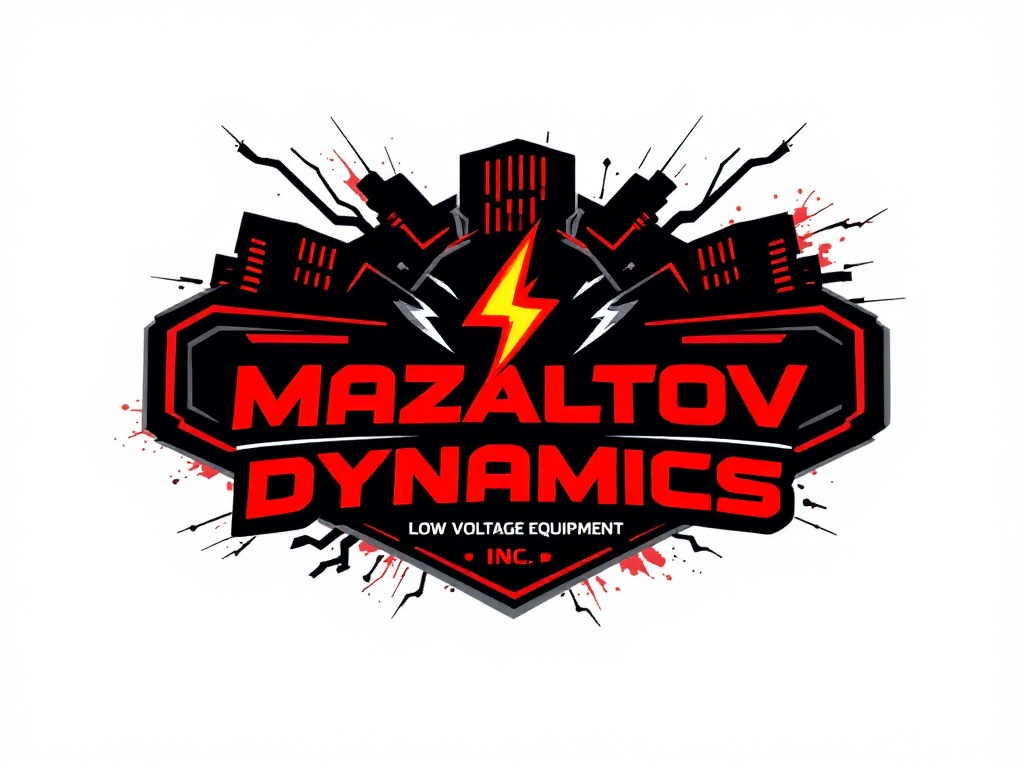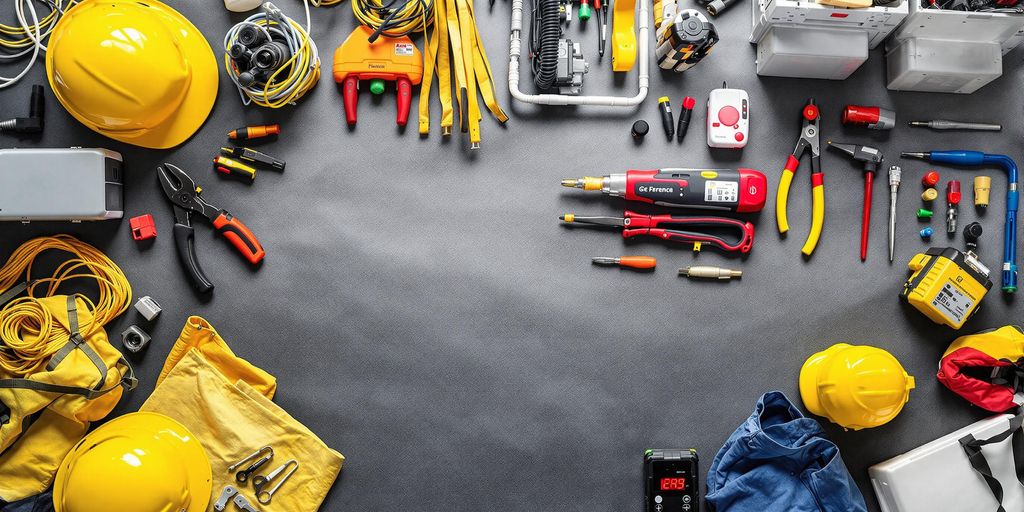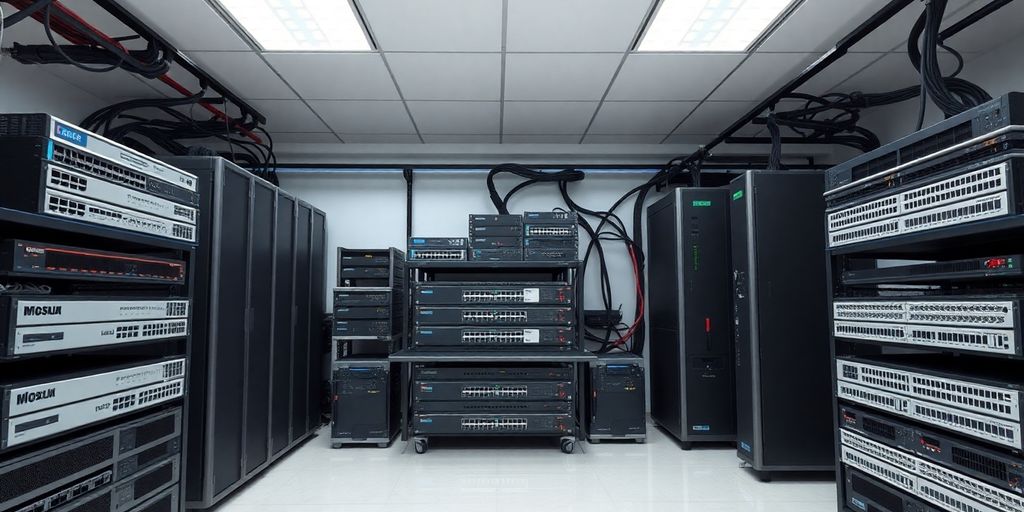Keeping up with facilities management electrical services is a big deal for businesses. Why? Because it helps make sure everything runs smoothly and safely. In today’s fast-paced world, having a well-maintained electrical system isn’t just a nice-to-have—it’s a must. From installing efficient lighting to managing energy use, there’s a lot to think about. This guide is here to walk you through the essentials, breaking down the best ways to keep your systems in top shape and your energy costs down.
Key Takeaways
- Hiring skilled electricians is crucial for safe and effective installations.
- Regular check-ups on your electrical systems can prevent unexpected issues.
- Keeping a detailed log of maintenance activities helps track system health.
- Smart controls and energy-efficient lighting can significantly cut down energy use.
- Outsourcing facilities management can bring in expertise and save costs.
Best Practices For Installation And Maintenance

Engaging Credentialed Electricians
Hiring skilled electricians is the first step to ensuring a safe and efficient electrical system. These professionals, who typically earn around $60,240 annually, are trained to handle everything from basic wiring to complex installations. It’s crucial to choose electricians with the right credentials to comply with safety standards and avoid potential hazards.
Regular Maintenance Checks
Routine maintenance is key to preventing electrical failures. Conducting regular inspections helps identify and fix issues before they escalate. Consider setting up a maintenance schedule that includes:
- Detailed inspections of all electrical components
- Testing of systems to ensure they are functioning properly
- Immediate repair of any identified issues
Documenting Maintenance Activities
Keeping a detailed record of all maintenance activities is vital. Documentation helps track the health of your electrical systems and ensures compliance with safety regulations. It should include:
- Dates and details of each inspection
- Identified issues and the steps taken to resolve them
- Recommendations for future maintenance
Regular documentation not only aids in smooth operation but also provides a clear history of the system’s upkeep, which can be invaluable for troubleshooting and audits.
For more detailed advice on facilities management, you might find the 50 valuable tips and best practices for facilities management resource insightful.
Optimizing Energy Efficiency In Commercial Electric Systems

Implementing Energy-Efficient Lighting
Switching to energy-efficient lighting is a straightforward way to cut down on power usage. LEDs are a game-changer, consuming less energy and lasting much longer than traditional bulbs. This not only saves money on electricity bills but also reduces maintenance costs due to their longevity. Consider these benefits:
- Lower Energy Consumption: LEDs use up to 75% less energy than incandescent lighting.
- Extended Lifespan: They last up to 25 times longer, reducing the need for frequent replacements.
- Environmental Impact: Less energy usage means a smaller carbon footprint.
Integrating Smart Controls
Smart controls are like the brain of your electrical system. They adjust lighting and HVAC based on occupancy and environmental conditions, ensuring energy is used only when necessary. Here’s how they help:
- Automated Adjustments: Lights dim or turn off when no one is around.
- Optimized HVAC: Heating and cooling systems adjust to the actual need, not just a preset schedule.
- Remote Management: Control systems via smartphones or computers, even when you’re not on site.
Enhancing Building Insulation
Proper insulation is key to maintaining a building’s internal temperature without over-relying on heating or cooling systems. A well-insulated building stays warm in the winter and cool in the summer, using less energy. Consider these aspects:
- Seal Gaps: Ensure windows and doors are properly sealed to prevent air leaks.
- Insulate Walls and Roofs: Use materials that keep heat in during the winter and out during the summer.
- Upgrade Windows: Consider double or triple-pane windows for better insulation.
By focusing on energy-efficient lighting, smart controls, and proper insulation, commercial buildings can significantly reduce their energy consumption and environmental impact. This approach not only cuts costs but also supports sustainability goals.
Leveraging Technology In Facilities Management
Integrating Innovative Technologies
In today’s fast-paced world, technology is reshaping how we manage facilities. By embracing new tools like smart lighting and automated climate control, offices can become more efficient and cozy. These technologies help cut down on energy use and save money. Facilities managers can now keep an eye on things from afar, getting real-time updates to make smart choices. Plus, with the Internet of Things (IoT), devices can chat with each other to improve performance and spot issues before they become big problems. This proactive method means less downtime and smoother operations.
Utilizing IoT Devices
IoT devices are game-changers in facility management. They provide real-time data on everything from room occupancy to air quality. This info lets managers make informed decisions, improving the overall experience for everyone in the building. Smart sensors and building automation systems work together to optimize energy use, cutting costs and reducing environmental impact. It’s not just about saving money; it’s about creating a better place to work.
Implementing Computer-Aided Facility Management
Computer-Aided Facility Management (CAFM) software is revolutionizing space management. These tools give a clear view of how space is used, helping organizations make the most of their layouts. By using CAFM, offices can create more engaging and collaborative environments. It’s all about transforming management strategies to boost efficiency and keep employees happy.
Regional Variances In Facilities Management
Facilities management isn’t a one-size-fits-all deal. Different regions have unique challenges that impact how facilities are managed. From bustling cities to remote rural areas, each setting demands a tailored approach.
Challenges In Urban Settings
Urban areas are all about density. With so many people and buildings packed together, managing facilities here means dealing with high demand and limited space. It’s crucial to focus on systems that can handle the load, like advanced building management systems that help streamline operations. Noise, pollution, and strict regulations are part of the package too, making it a complex environment to navigate.
Resource Conservation In Rural Areas
In contrast, rural areas often face the challenge of resource scarcity. Water, energy, and even personnel can be in short supply. Facilities managers need to get creative, focusing on conservation and efficiency. Here, it’s all about making the most of what’s available. Simple, sustainable practices can go a long way in ensuring facilities run smoothly without depleting local resources.
Navigating Regulatory Variations
Regulations can vary widely from one region to another. What flies in one place might be a no-go in another. This means facilities managers need to stay on top of local laws and adjust their strategies accordingly. Whether it’s environmental standards or safety codes, understanding and complying with these rules is essential to avoid fines and ensure smooth operations.
Facilities management is about adapting to the environment you’re in. Whether it’s a skyscraper in a city or a farm in the countryside, the key is to understand the local context and plan accordingly. This adaptability not only ensures compliance but also promotes efficiency and sustainability across different regions.
Maximizing Efficiency With Commercial Electric Systems
Understanding Key Components
When it comes to commercial electric systems, it’s not just about wires and switches. These systems are intricate networks, where every piece plays a role. At the core are electrical panels, which act like the brain, directing electricity throughout the building. They work hand-in-hand with the wiring systems, ensuring power flows smoothly. Outlets and switches provide easy access to this power, while lighting fixtures brighten up the space as needed. But it’s not just about hardware anymore. Advanced lighting systems, including LED lighting and smart controls, have transformed how we think about energy use. They save energy and last longer, making them a smart choice for businesses looking to cut costs and go green.
Implementing Building Management Systems
Building Management Systems (BMS) are like having a smart assistant for your building. They give you control over lighting, climate, and other vital functions, all from a central point. Imagine managing a large shopping mall with real-time alerts for any system hiccups. That’s the power of a BMS. It helps cut down service times and keeps things running smoothly. In the long run, this means fewer disruptions and a more efficient operation.
Adopting Renewable Energy Sources
Switching to renewable energy isn’t just a trend; it’s a smart move for businesses aiming for sustainability. Solar panels and other renewable sources can drastically cut down on energy costs and carbon footprints. They help businesses transition towards net-zero emissions, which is becoming increasingly important. Plus, as energy regulations evolve, having a renewable strategy in place ensures compliance and future-proofs your operations.
Embracing renewable energy and smart technologies in commercial electric systems isn’t just about saving money. It’s about creating a sustainable future and being part of a larger movement towards environmental responsibility.
The Role Of Facilities Management In Sustainability
Facilities management plays a vital role in promoting sustainability within organizations. By focusing on reducing waste, conserving resources, and optimizing energy usage, facilities managers can significantly impact a company’s environmental footprint. Let’s explore some key strategies that facilities management employs to support sustainability efforts.
Reducing Ecological Footprint
Facilities managers are instrumental in minimizing the ecological footprint of a business. This involves implementing practices that reduce waste and emissions, such as recycling programs and energy-efficient systems. By adopting these practices, companies not only contribute to a healthier planet but also often realize cost savings.
- Implement recycling and waste reduction programs.
- Upgrade to energy-efficient lighting and appliances.
- Regularly monitor energy usage to identify areas for improvement.
Implementing Green Initiatives
Green initiatives are at the heart of sustainable facilities management. These initiatives can range from simple changes, like using eco-friendly cleaning products, to more complex projects, such as installing solar panels. Facilities managers need to stay informed about the latest green technologies and practices to keep their organizations at the forefront of sustainability.
- Use environmentally friendly cleaning supplies.
- Invest in renewable energy sources like solar or wind.
- Encourage sustainable commuting options for employees.
Promoting Energy Conservation
Energy conservation is a critical component of sustainability. Facilities managers can promote energy conservation by implementing smart building technologies and engaging employees in energy-saving practices. This not only helps reduce the environmental impact but also lowers operational costs.
Facilities management is more than just maintaining buildings; it’s about creating a sustainable future. By championing energy conservation and green initiatives, facilities managers can lead the charge towards a more sustainable and efficient workplace.
Facilities managers play a crucial role in enhancing operational efficiency and resource utilization while significantly impacting environmental sustainability. By integrating these strategies into daily operations, facilities management not only supports the environment but also contributes to the overall success and reputation of the organization.
Outsourcing Facilities Management Services
Benefits Of Engaging External Experts
Outsourcing facilities management can be a game-changer for businesses looking to improve efficiency. By bringing in external experts, companies can tap into specialized skills and industry knowledge that they might not have in-house. This means your team can focus more on core activities, while the experts handle the nitty-gritty of maintaining a productive work environment. This approach can significantly boost operational performance.
Effective Vendor Management
Managing vendors effectively is crucial when outsourcing facilities management. It’s important to establish clear communication channels and set expectations from the get-go. Here are some tips:
- Define roles and responsibilities clearly to avoid any confusion.
- Regularly review vendor performance to ensure they meet your standards.
- Foster a collaborative relationship to encourage innovation and problem-solving.
Balancing In-House And Third-Party Resources
Finding the right balance between in-house and outsourced resources is key to maximizing efficiency. Here are a few strategies to consider:
- Assess your current capabilities and identify gaps that could be filled by external providers.
- Decide which functions are best kept in-house and which can be outsourced without compromising quality.
- Continuously evaluate the performance of both in-house and third-party teams to ensure alignment with business goals.
Outsourcing facilities management offers cost savings, scalability, and access to specialized expertise for property management professionals. It streamlines operations and enhances efficiency.
By strategically outsourcing, businesses can not only save costs but also gain access to advanced technology and tools that might otherwise be out of reach. This approach can lead to a more flexible and responsive facilities management system, ultimately supporting long-term success.
Conclusion
Alright, so we’ve covered a lot about facilities management and electrical services, right? It’s clear that keeping things running smoothly isn’t just about fixing stuff when it breaks. It’s about planning, maintaining, and using the right tech to make sure everything works efficiently. From smart lighting to regular check-ups, these strategies help save energy and cut costs. Plus, having a well-trained team makes a big difference. They’re the ones who keep everything safe and functional. So, whether it’s a big shopping mall or a small office, good facilities management is key to keeping the lights on and the bills down. It’s not just about today, but setting up for a better, more efficient tomorrow.
Frequently Asked Questions
What are the benefits of hiring certified electricians for commercial spaces?
Certified electricians ensure that installations meet safety standards and function correctly. They help prevent electrical issues that could lead to costly repairs or safety hazards.
How often should regular maintenance checks be conducted on electrical systems?
It’s best to schedule maintenance checks at least once a year. Regular inspections help identify potential problems early and keep the systems running smoothly.
Why is documenting maintenance activities important?
Keeping records of maintenance activities helps track the condition of electrical systems over time. It ensures that nothing is overlooked and aids in planning future maintenance.
How do energy-efficient lighting solutions save money?
Energy-efficient lighting, like LED bulbs, uses less electricity and lasts longer than traditional lighting. This reduces energy bills and the frequency of bulb replacements.
What role do smart controls play in energy efficiency?
Smart controls adjust lighting and climate settings based on occupancy and environmental conditions, reducing unnecessary energy usage and lowering utility costs.
How can businesses improve their building’s insulation?
Improving insulation involves sealing gaps, adding weather stripping, and using energy-efficient windows. This helps maintain a consistent indoor temperature and reduces energy costs.



